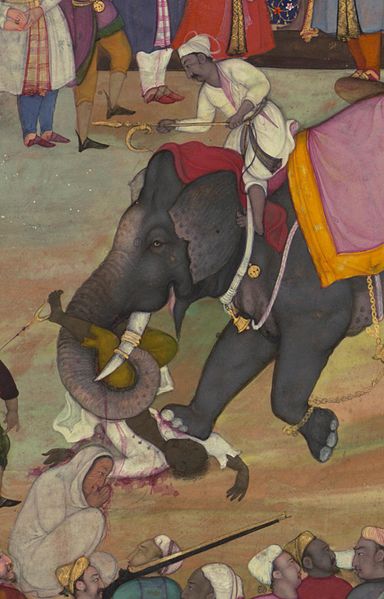Execution by elephant, or Gunga Rao, was a method of capital punishment in South and Southeast Asia, particularly in India, where Asian elephants were used to crush, dismember, or torture captives during public executions. The animals were trained to kill victims immediately or to torture them slowly over a prolonged period. Most commonly employed by royalty, the elephants were used to signify both the ruler's power of life and death over his subjects and his ability to control wild animals.
Illustration from the Akbarnama, the official chronicle of the reign of Akbar, the third Mughal emperor
Execution by elephant carved on a pillar of the 11th–12th century Modhera Sun Temple in Gujarat, India
Louis Rousselet described this execution in Le Tour du Monde in 1868.
Ottoman miniature depicting the execution of prisoners of war in Nándorfehérvár
Dismemberment is the act of completely disconnecting and or removing the limbs from a living or dead being. It has been practiced upon human beings as a form of capital punishment, especially in connection with regicide, but can occur as a result of a traumatic accident, or in connection with murder, suicide, or cannibalism. As opposed to surgical amputation of limbs, dismemberment is often fatal. In criminology, a distinction is made between offensive dismemberment, in which dismemberment is the primary objective of the dismemberer, and defensive dismemberment, in which the motivation is to destroy evidence.
15th century depiction of Adoni-Bezek being mutilated.
The Martyrdom of St. Hippolytus by Dieric Bouts
Aztec stone disk depicting a dismembered Coyolxauhqui which was found during construction in 1978 in Mexico City. Its discovery led to the excavation of the Templo Mayor.
The execution of Sir Thomas Armstrong, who was hanged, drawn and quartered in England for high treason in 1684








